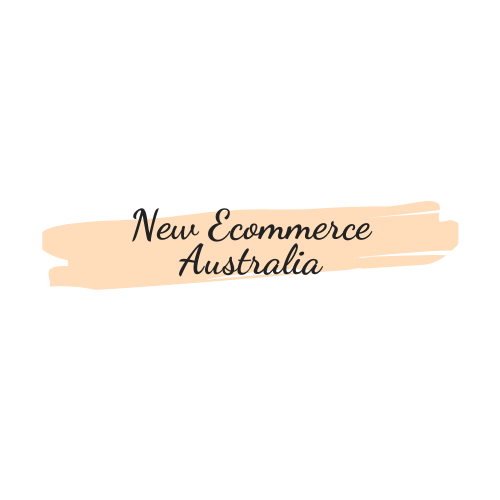See our services : Blockchain development, Backbase Solutions
Your eCommerce Guide to Product Sourcing
Although every eCommerce business is unique, one thing is constant: you need products to sell. It’s easier than ever to create an online shop with eCommerce platforms like Wix eCommerce. However, it is important to know how you source your products before you launch an eCommerce business.
We all imagine customers opening packages and discovering the products inside. However, it is important to understand how those products are stored, created, distributed, and delivered to customers.
You must ask yourself these questions as a potential merchant:
- Do you source products from other sources, such as through dropshipping or print on demand?
- Is it possible to pay a manufacturer for original products that you have designed?
- Are you manufacturing the products yourself?
These are all viable options for product sourcing. Wix dropshipping stores are a great option if you need to sell quickly. Let’s look at the pros and cons for each product sourcing model and how you can choose the right one.
What is product sourcing?
Product sourcing refers to the process of locating and purchasing the products you will sell to your customers.
Some products may be manufactured by third parties and shipped directly to customers or to eCommerce businesses first. Others will buy raw materials to make the final product. These products will then be shipped to their customers.
The Global Awarded Magento POS – 2021 Stevie Awards Product Innovation winner provides you with a powerful Magento POS extension as well as 24/7 support. Other products : Shopify Pos, Bigcommerce Pos, Woocommerce Pos
Many businesses use a variety of product sourcing options depending on the products they are selling. This means that product sourcing decisions should be made after you have determined what your products are, how they will be made and how you plan to get them to customers.
How do you source products for eCommerce
There are three main approaches to product sourcing in eCommerce: A dropshipping partner, a third-party manufacturer or you can make your own products.
Let’s take a closer look at each to help you decide how to source the right products for your company.
01. Third-party Approach: Partner with a dropshipper
dropshipping is a great way to start a business if you don’t want to make the products.
Dropshipping allows you to source products that you like from different suppliers. These products will be listed on your website and promoted. You’ll receive a customer’s order when they place it. The seller will fulfill it and send it to the customer.
Cruising Aviation sells aviation-related merchandise online. It was founded by a student pilot. It offers over 300 items and ships internationally using integrated dropshipping apps. The average shipping time is 2-4 days.
The pros and cons
Dropshipping is a great way to get started with a business. The upfront costs of dropshipping are very low.
Dropshipping allows you to quickly access a large and varied range of products to add to your online store. Dropshipping can be used by pet companies to sell more than high-quality dog leashes. They could also use dropshipping to add toys, water bowls, collars and other accessories to their website from many different vendors.
Dropshipping is a great way to save money and not have to worry about inventory control. Dropshipping is a low-risk option because you don’t need to sell products if nobody buys them.
You don’t have access to most of the production or distribution processes, so there is a downside. This can make it difficult to trust a third-party seller. Customers could also do quick searches and find identical or similar products elsewhere, which can make it less competitive.
Tips to Success
Are you ready to start dropshipping? These tips will help you succeed.
- Dropshipping partners that are reliable and trustworthy. You want to achieve great results by choosing vendors and third-party suppliers that you can trust. Each of the following features can help you make your customers’ experience more memorable.
- Modalyst
- Spocket
Modalyst, Sprocket, and Printify offer dropshipping. Printful and Printify are printing on demand services that can produce products with your customized designs and take care fulfillment.
- Based on the different vendors, get accurate shipping dates for each product. Dropshippers are often used by different businesses. You should ensure that every product you sell has an accurate shipping and arrival date.
- Look for partners who can integrate with your eCommerce platform. Wix’s eCommerce platform has direct integrations to a variety of dropshipping platforms including the ones mentioned above. This allows you to track and execute orders more easily.
- Your site should have unique product descriptions and titles. You don’t have to tell customers that you sell the exact same product online as other shops. Make sure you have a unique product title and description.
02. The partner approach: Select a manufacturer
You can design your products and possibly select the raw materials. However, you will work with a manufacturer to create the goods. They might be responsible for import and shipping the goods to you.
The pros and cons
This is a great option for companies that already work at a large scale, as you will need to order in bulk. They won’t make products on-demand.
You might want your own team to make custom wedding dresses, but a manufacturer could create large quantities of the same line you have designed.
Although this adds an additional cost to the production process, it can be comparable to the time and labor that you are spending on your own or for your team to create the items.
It’s easier to grow your business with a manufacturer. As demand rises, you won’t have to constantly train and hire new employees.
Keep in mind, however, that you don’t manufacture the products directly. However there is still a degree of quality control. Before you send the products to customers, you can inspect them. It is important to understand how to locate a manufacturer that you can trust to provide quality product sourcing.
From Forge to Table saw a surge in sales during the initial days of the 2020 pandemic. This was due to increased interest in cooking, and positive reviews by influencers. It soon ran out its hand-crafted knives supplied by a family-owned, southern Chinese forge. This was due to rapid sales and delays in transport.
The strategic solution: Forge to Table used the time to increase its email marketing efforts and to connect with customers via social media, while waiting for a supply to replenish. They also took advantage of their momentum and partnered with a local business to produce and sell branded aprons. Noah Rosen, founder of Forge to Table, stated that even though stock is limited, it’s important to have a plan in place and stay connected to your customers.
The result: Forge to Table stocks were restocked in anticipation of a holiday season with a 345 percent increase in sales over 2019.
Tips to Success
These are the key factors to consider when sourcing product from a manufacturer.
- Select a manufacturer that meets your needs now and in the long-term. You may only require 100 products per month, but the same manufacturer will be able work with you if you need 1,000 products every month. Long-term compatibility is key to your business’s growth.
- Choose a trustworthy partner. A manufacturer should be reliable in both timing and quality. Quality issues and delays can negatively impact your business, as well as customer satisfaction.
- Factor in manufacturing costs when calculating the price of your products. This is especially important for those who are moving to manufacturing from a third party for the first time. It is important to factor in all costs associated with working with a manufacturer into your overall product cost.
03. DIY: Make your own supplies
DIY is the best option if you are looking to source your primary products from a manufacturer or an in-house team.
This category could include:
- A jeweler who source raw materials to create and sell their own rings, necklaces and bracelets online.
- A cosmetics company such as Little Giraffe Bath & Body Co which sources high-quality ingredients to make batches of skincare products for direct sale to customers
- Carpenters who make furniture that can be shipped to their customers
The pros and cons
For raw materials such as the gold and diamonds needed for jewelry or the wood required for carpentry, you will need to have connections with vendors. You will have the option to choose who you work with and full control over quality and creativity. You are creating the product from scratch.
You are responsible for all aspects of product creation. Although you can use a distribution center for some storage and shipping, you will need to deliver the products first.
Because you create something truly unique, creating your own products can give you an edge in the market.
It’s important to remember that it can be difficult to keep up with the entire process of sourcing, manufacturing, packaging, and shipping products. If you start small, such as with one jeweler or carpenter, it may be more difficult to scale up.
Unless you are making products to order, it is likely that you will need to order them in advance. This will also mean higher upfront costs than other product sourcing models such as dropshipping.
Tips to Success
These tips will help you have the best chance of success when creating your own products.
- Get an exact cost for each product, as well as the time it takes to produce them. Consider how these may change over time.
- Think about how delays in your supply chain can impact your customers and you. COVID-19 is an extreme example. However, it’s not unusual for fluke events to cause problems with the supply chain across different industries. The United States has an example of this: a major chlorinator plant shut down recently, and the pool industry is temporarily disrupted. This can happen to any industry supply without warning.
- You should consider storage for products and supplies. Not only do you need to store the finished product, but also the materials and packaging materials.
How do you choose the best product sourcing method?
Each product source option has its advantages and disadvantages. The choice of which one you choose depends on the products you are selling and how your business operates.
If a business owner wants to be present in the factory every day so their team can manage the process, they will choose a DIY approach. A manufacturer is a good option for someone who only wants to make custom products, but does not want to produce them.
You can combine as many product sourcing options and products as you like.
An eCommerce company could order tents made by a manufacturer to sell camping tents. They may also see the benefits of selling quality sleeping bags on their website, which they source from a dropshipper.
You can increase the average order value of your customers by providing more options and relevant products. This will increase customer satisfaction as well as your revenue.
Final thoughts
The core of your eCommerce business will be determined by product sourcing. It is important that you make the right choice.
You can always pivot as your business grows, but it is easier to choose options that work with your business and to have a plan for when you need to change how you source your products.
Consider how to best sell the goods you are interested in, and maximize your profit, when you’re deciding between product sourcing models. If you plan on selling custom-made, high-value goods, consider scalability. Also, factor in where you would like to be in a year, five, and fifteen years.
source https://www.wix.com/blog/ecommerce/2021/05/product-sourcing

